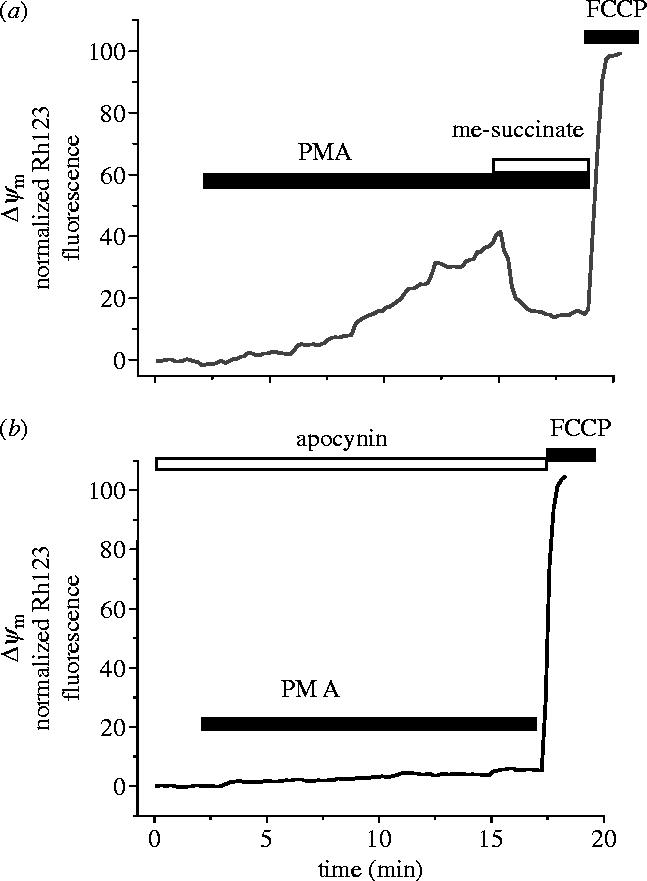Figure 5.

Activation of the NADPH oxidase by PMA causes a slow loss of mitochondrial potential that is reversed by mitochondrial substrate. The ‘classical’ activator of the NADPH oxidase in neutrophils, PMA, increases ROS generation in astrocytes (not shown) and produced a slow but sustained mitochondrial depolarization in the majority of cortical astrocytes tested (n=91 of 98 cells). B. This effect was inhibited by apocynin (n=65) or DPI (0.5 μM; n=48, not shown). Further similarity between the Aβ- and PMA-induced changes in Δψm can be seen by the reversal of the PMA induced response by delivery of mitochondrial substrate—illustrated here for methyl-succinate. Similar data were obtained for glutamate (1 mM; n=62 for PMA and n=218 for Aβ) and methyl-succinate (n=66 for PMA and n=145 for Aβ).
